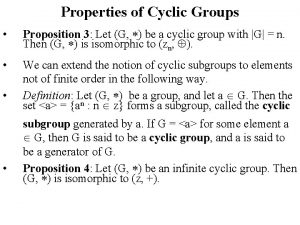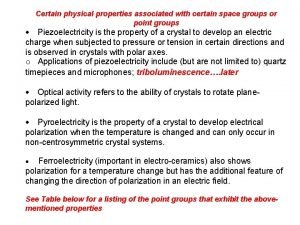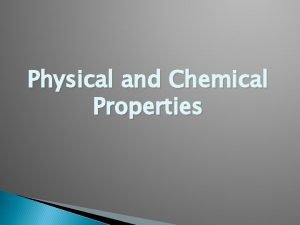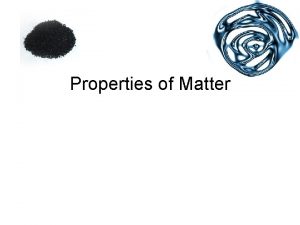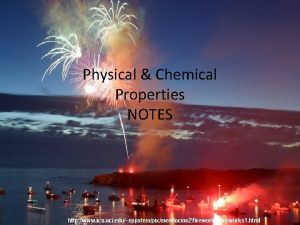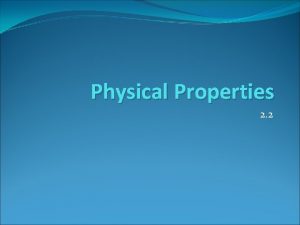Certain physical properties associated with certain space groups






![SECOND HANDOUT Refutation of a Claimed Exception to Zink’s Rule: (TEA)[Eu(DBM)4] redetermine I 2/a SECOND HANDOUT Refutation of a Claimed Exception to Zink’s Rule: (TEA)[Eu(DBM)4] redetermine I 2/a](https://slidetodoc.com/presentation_image/6868f0648546b9c19ebea73d75894910/image-7.jpg)
![Three Genuine Exceptions to Zink’s Rule: Structural Redeterminations (piperidinium)[Eu(BA)4] [Tb. Cl 2(H 2 O)6]Cl Three Genuine Exceptions to Zink’s Rule: Structural Redeterminations (piperidinium)[Eu(BA)4] [Tb. Cl 2(H 2 O)6]Cl](https://slidetodoc.com/presentation_image/6868f0648546b9c19ebea73d75894910/image-8.jpg)
![Not Every Noncentrosymmetric Eu(III) Complexes Are Observably Triboluminescent Not Triboluminescent Na 3[Eu(ODA)3] • 8 Not Every Noncentrosymmetric Eu(III) Complexes Are Observably Triboluminescent Not Triboluminescent Na 3[Eu(ODA)3] • 8](https://slidetodoc.com/presentation_image/6868f0648546b9c19ebea73d75894910/image-9.jpg)
- Slides: 9

Certain physical properties associated with certain space groups or point groups · Piezoelectricity is the property of a crystal to develop an electric charge when subjected to pressure or tension in certain directions and is observed in crystals with polar axes. o Applications of piezoelectricity include (but are not limited to) quartz timepieces and microphones; triboluminescence…. later · Optical activity refers to the ability of crystals to rotate planepolarized light. · Pyroelectricity is the property of a crystal to develop electrical polarization when the temperature is changed and can only occur in non-centrosymmetric crystal systems. · Ferroelectricity (important in electro-ceramics) also shows polarization for a temperature change but has the additional feature of changing the direction of polarization in an electric field. See Table below for a listing of the point groups that exhibit the abovementioned properties


Literature case studies 1. TRIBOLUMINESCENCE: • Non-centric space groups 2. Conducting materials • Segregated 1 -D stacks 3. Magnetic materials • Integrated 1 -D stacks 4. Photoluminescent materials • Packing by closed-shell metal-metal interactions

A Structural Study of Triboluminescence (TL) • General – Almost exclusively seen in crystalline samples – Luminescent species • the surrounding gas (N 2) • the compound itself • a combination of both 11 e. V ground state TL spectrum of sucrose Energy level of N 2 excitation piezoelectricity emission Noncentrosymmetric space group

• Zink’s “golden rule” : only noncentrosymmetric crystals could be triboluminescent. See ABSTRACT & TABLE 1 IN HANDOUT: B. P. Chandra, J. I. Zink, Inorg. Chem. , 1980, 19, 3098. Some other papers by Professor Zink about triboluminescence: • Zink, J. ; Hardy, G. E. ; Sutton, J. E. , J. Phys. Chem. , 1976, 80, No. 3, 248. • G. E. Hardy; J. I. Zink, Inorg. Chem. , 1976, 15, 3061. • B. P. Chandra, J. I. Zink, J. Phys. Chem. , 1982, 86, 4138

Zink’s Rule is Valid for 11 Tetrahedral Mn(II) Complexes Compound Triboluminescent Space Group Known Previously (Py. H)2 Mn. Cl 4 No P 1 (Me 3 Ph. P)2 Mn. Cl 4 Yes P 213 (Me 4 N)2 Mn. Cl 4 No P 21/n (Et 4 N)2 Mn. Br 4 Yes P 421 m (noncentro) (Bu 4 N)2 Mn. I 4 No (Ph 3 PO)2 Mn. Cl 2 Yes (80 K) (Ph 3 PO)2 Mn. Br 2 Yes P 1 (noncentro) (Ph 3 PO)2 Mn. I 2 Yes P 1 (Ph 3 As. O)2 Mn. Cl 2 No P 21/n (Ph 3 As. O)2 Mn. Br 2 Yes (80 K) Pca 21 (noncentro) (Ph 3 As. O)2 Mn. I 2 No P 1 Fdd 2 Space Group Determined in This Work (noncentro) Cotton, F. A. ; Daniels, L. M. ; Huang, P. Inorg. Chem. 2001, 40, 3576.
![SECOND HANDOUT Refutation of a Claimed Exception to Zinks Rule TEAEuDBM4 redetermine I 2a SECOND HANDOUT Refutation of a Claimed Exception to Zink’s Rule: (TEA)[Eu(DBM)4] redetermine I 2/a](https://slidetodoc.com/presentation_image/6868f0648546b9c19ebea73d75894910/image-7.jpg)
SECOND HANDOUT Refutation of a Claimed Exception to Zink’s Rule: (TEA)[Eu(DBM)4] redetermine I 2/a Z = 4 R(F) = 0. 0749 R(w. F) = 0. 0817 Sweeting, L. M. ; Rheingold, A. L. J. Am. Chem. Soc. , 1987, 109, 2652. Ia Z=4 R 1 = 0. 0581 w. R 2 = 0. 0952 Flack x = 0. 00(2) Cotton, F. A. ; Daniels, L. M. ; Huang, P. Inorg. Chem. Comm. , 2001, 4, 319.
![Three Genuine Exceptions to Zinks Rule Structural Redeterminations piperidiniumEuBA4 Tb Cl 2H 2 O6Cl Three Genuine Exceptions to Zink’s Rule: Structural Redeterminations (piperidinium)[Eu(BA)4] [Tb. Cl 2(H 2 O)6]Cl](https://slidetodoc.com/presentation_image/6868f0648546b9c19ebea73d75894910/image-8.jpg)
Three Genuine Exceptions to Zink’s Rule: Structural Redeterminations (piperidinium)[Eu(BA)4] [Tb. Cl 2(H 2 O)6]Cl P 21/n Z = 4 P 2/n R 1 = 0. 0573 WR 2 = 0. 0887 R 1 = 0. 0147 w. R 2 = 0. 0317 Z = 2 Rheingold, A. L. ; King, W. , Inorg. Chem. , 1989, 28, 1715. [Tb(antipyrine)6]I 3 R Z = 3 R 1 = 0. 0253 WR 2 = 0. 0601
![Not Every Noncentrosymmetric EuIII Complexes Are Observably Triboluminescent Not Triboluminescent Na 3EuODA3 8 Not Every Noncentrosymmetric Eu(III) Complexes Are Observably Triboluminescent Not Triboluminescent Na 3[Eu(ODA)3] • 8](https://slidetodoc.com/presentation_image/6868f0648546b9c19ebea73d75894910/image-9.jpg)
Not Every Noncentrosymmetric Eu(III) Complexes Are Observably Triboluminescent Not Triboluminescent Na 3[Eu(ODA)3] • 8 H 2 O Eu 2(phen)2(C 8 H 7 O 2)6 ] • 2 H 2 O Cc Cc Z=4 R 1 = 0. 0255 WR 2 = 0. 0699 R 1 = 0. 0547 WR 2 = 0. 1214 Albin, M. ; Whittle, R. R. ; Horrocks, W. D. Inorg. Chem. 1985, 24, 4591. Jin, L. -P. ; Wang, R. -F. Chem. J. Chin. Univ. 1993, 14, 1195.
 Physical properties and chemical properties
Physical properties and chemical properties How are ethnic groups and religious groups related
How are ethnic groups and religious groups related Cyclic group properties
Cyclic group properties Basic properties of groups
Basic properties of groups Cyclic group properties
Cyclic group properties Joint space vs cartesian space
Joint space vs cartesian space Space junk the space age began
Space junk the space age began Camera space to world space
Camera space to world space Unscented trajectory chapter 5
Unscented trajectory chapter 5 World space to screen space
World space to screen space


